Based In Science, Elevated by Service
Based In Science, Elevated by Service By Vessel Crew Vessel’s passion for improving the lives of others is anchored in an enthusiasm for science and its basis in wellness. Since our founding,…

By Vessel Crew
“Tennis elbow….but I don’t even play tennis?” Tennis elbow is a tricky injury that might or might not go away on its own. It is often caused by things other than playing tennis such as jobs or hobbies that require gripping and twisting. Unfortunately, the injury is often ignored early on or the pain is “played through” until the pain starts affecting routine activities like opening doors or simply grasping a cup. The good news is that fixing tennis elbow pain can often be done with self-care or conservative treatments and rarely requires surgery.
Tennis elbow, or lateral epicondylitis, is a painful condition that occurs when tendons in your elbow are overloaded, usually by repetitive motions of the wrist and arm. Despite its name, athletes are not the only people that develop tennis elbow. People whose jobs feature the types of motions that can lead to tennis elbow include plumbers, painters, carpenters, and butchers. The pain of tennis elbow occurs primarily where the tendons of your forearm muscles attach to a bony bump on the outside of your elbow. The pain can also spread into your forearm and wrist.
First, the good news. Tennis elbow will usually heal on its own. If you catch it early enough, simply resting your elbow and giving it time to heal will fix your tennis elbow. It is probably safe to assume that if you are reading this blog, resting did not work and you are looking for some additional treatments to help. The following are six steps to fixing tennis elbow pain:
Ice is a great first step in fixing your tennis elbow. As soon as you notice pain, apply ice or cold packs for 10 to 15 minutes and do this several time per day. Always be sure to put a thin cloth between the ice and your skin to prevent damaging your skin. The ice helps reduce the pain and inflammation caused by the damaged tendons.
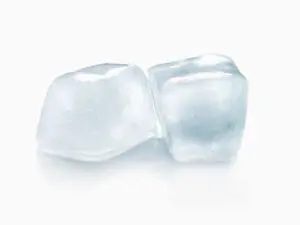
There are numerous types of straps and braces for fixing tennis elbow but they all generally work the same way. By applying pressure to the muscles and tendons attached to the lateral epicondyle, they absorb some of the forces being transmitted through the tissues. Additionally, they change the angle of the tendons and the forces applied at the attachment giving the injured portion some relief to heal. A strap or brace can also help prevent your tennis elbow from reoccurring.
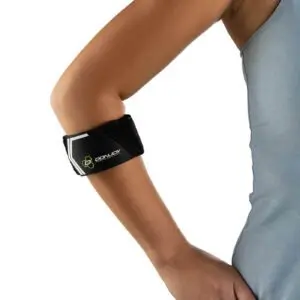
If ice and straps are not enough to alleviate your tennis elbow pain, NSAIDs (nonsteroidal anti-inflammatory drugs) like aspirin, ibuprofen (Motrin, Advil), or naproxen (Aleve) can ease pain and reduce inflammation. There is emerging evidence that NSAIDs may hinder the healing process so you may want to use these sparingly. If you must take them for more than a week, it is time to call your doctor.
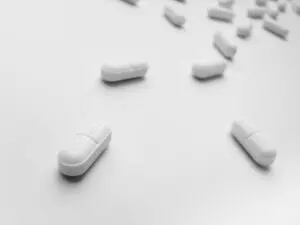
The first thing your doctor will likely recommend is physical therapy (PT) for fixing tennis elbow pain. The goal with PT is to improve your forearm muscles’ strength and flexibility. Normally it will start with pain relief where the therapist will try things such as ice massage, ultrasound, muscle stimulation, etc. Once you have some relief, you will be eased into exercises and stretching. Exercises include wrist turns, forearm strengthening, and eccentric movements. Stretching will include wrist extensor, wrist flexor, and finger stretches. Even if PT fixes your tennis elbow pain, you may be told to continue with the routine in order to avoid re-injuring it.
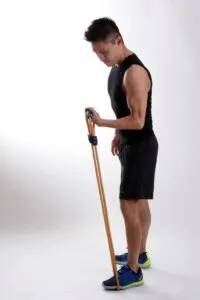
A steroid injection may be recommended after these other treatments have failed or it may be recommended initially if the pain is severe enough. Usually known as a cortisone shot, steroid injections provide short-term pain relief but are not a long-term solution. Cortisone is a powerful anti-inflammatory that significantly reduces or eliminates pain. It may be given initially to allow you to work with a therapist on stretching and strengthening your injury. It is important to note that Cortisone shots do not cause or speed healing. In fact, frequent use of them can cause tissue damage or tendon rupture, which is why its use is limited.
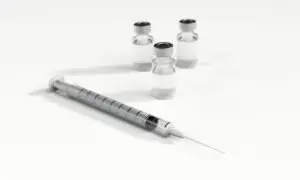
Usually, the previous conservative treatments are sufficient at fixing tennis elbow pain. But, if your tennis elbow does not respond after several months, you may have a severe case that requires surgery. The surgery is an outpatient procedure where the surgeon debrides the damaged tendon(s). You are often put to sleep, a surgeon makes an incision, and then scraps away (debrides) the scar tissue on the tendon. The surgeon may also reattach surrounding tendons and sew together healthy tendons. It normally takes 6 to 12 weeks before you can use your elbow for routine activities again and 4 to 6 months before exercise and sports.
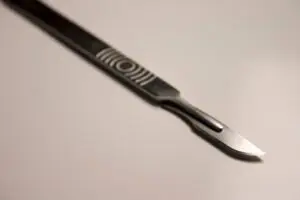
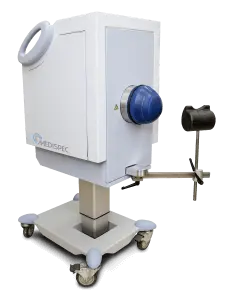
If you would like to avoid the risks and downtime of surgery, your tennis elbow can also be treated with a single session of High-energy Extracorporeal Shockwave Therapy (HeSWT). HeSWT is an FDA approved, non-invasive alternative to surgery for numerous musculoskeletal injuries, including tennis elbow. It uses powerful, focused acoustic waves from outside the body to break apart the scar tissue, increase blood flow, and stimulate the body’s natural healing process. There is no downtime after being treated but you have to avoid high-impact activities for 30 days as your tendons heal.
Fixing tennis elbow pain is relatively easy if caught early. The problem is that the pain from tennis elbow is often “played through” and the body is not given enough time to heal. This sometimes leads to moderate to severe cases of tennis elbow that require medical attention. Self-care includes ice, straps, and NSAIDs. Your doctor may recommend physical therapy and/or a steroid injection. These conservative treatments often work but occasionally tennis elbow may require surgery or High-energy Shockwave Therapy, a non-invasive alternative to surgery. The good news is that self-care and medical treatments often work but if they do not, you have a non-invasive option to surgery that will get you back to work, on the court, or in the gym pain free.
Based In Science, Elevated by Service By Vessel Crew Vessel’s passion for improving the lives of others is anchored in an enthusiasm for science and its basis in wellness. Since our founding,…
NADH, NAD+, And NAD Benefits, Side Effects, Dosage And Stacking By Vessel Crew Let’s learn a little about this co-enzyme called NAD. It can be referred to as NADH, NAD+, NAD, vitamin…
©2024 Vessel Longevity + IV Bar ATX